#Nepali Gurkhas
Explore tagged Tumblr posts
Text
There are about 35,000 Nepali Gurkhas currently serving in the Indian army, including in the geopolitically sensitive region of Indian-administered Kashmir and the northeastern parts of the country. The Gurkhas have a strong bond with the Indian military, and Gurkha regiments have become part of the culture of the Nepali hill communities. There are about 120,000 Indian Gurkha veterans living in Nepal. Their pension and other benefits have contributed to the economy of the impoverished hill regions.
Anbarasan Ethirajan, ‘Agnipath scheme: The pain of Nepal's Gurkhas over Indian army's new hiring plan’, BBC
#BBC#Anbarasan Ethirajan#Nepali Gurkhas#Indian army#Indian-administered Kashmir#Gurkhas#Gurkha regiments#Nepali hill communities#Indian Gurkha veterans#Nepal
5 notes
·
View notes
Text
The whiplash of seeing anything nepali online that isn't specifically from a person here or visiting is something else.
#im so used to nepal being invisible except like moments where mt everest and i guess?? tourism??? are mentioned i guess?#like even listening to tma and getting to a story where there was a gurkha soldier (he was the grandfather of the character) was shocking#even tho it shouldn't be because lots of nepali people are everywhere around the world#immigrating for education is a big thing here#camus muses#anyway LOL
5 notes
·
View notes
Text








Eri is Spanish people of Nepali descent.
We Finally go to Pasio!
RAAAAAAAAH!!!!
#pokemon#pokemon masters#pokemon masters ex#pokemas#team star#team star eri#eri pokemon#pokemon eri#pokemon scarlet and violet#pokemon scarvi#pokemon sv#gurkha#gurkhas#nepal#nepali#nepalese#nepali girl#nintendo#dena
3 notes
·
View notes
Text
#nepali restaurant#The Gurkha Naan/ Restaurant#Restaurant in Purley#Croydon#Takeaway and Delivery in Purley#Fine Dine In Restaurant in Purley#Restaurant near by Purley#Best Restaurant in Purley#Nepalese and Indian Restaurant in Purley
0 notes
Text






British Royal Family - The Duchess of Edinburgh, interacts with Gurkha graduates and their family members during the annual attestation parade at the British Gurkha Camp during day four of their official tour to Nepal in Pokhara, Nepal. The parade celebrates over 200 years of partnership between the UK and Nepal and the service of Gurkhas in the British Army. About 13,000 Nepalis apply and only 270 graduate. The visit celebrates close relations between the UK and Nepal. (Photo by Chris Jackson) | February 07, 2025
#royaltyedit#theroyalsandi#duchess of edinburgh#duchess sophie#sophie duchess of edinburgh#nepal visit 2025#feb 2025#2025#british royal family#my edit
95 notes
·
View notes
Text
Others: If you were asked to write for the 5th Valkyria Chrinicles game, how would you write it?
Me: As a mixture of the Burma, New Guinea, and Borneo campaign.
Others: … What?
Me: Well, the Valkyria chronicles franchise has always liked toying with some degree of moral ambiguity, with an empire that is clearly in the wrong, but the side you are fighting for, while better, still has glaring flaws. Furthermore, the fourth game implied and talked about the idea that nations within the Federation has colonies, and while I am skeptical of how much of what the Imperial soldier stating that claim is stating established facts or state propaganda, that could be an angle to explore plot wise.
Think about it, perhaps the Empire launches a naval invasion to try and take over these resource rich colonies, and are banking on creating a narrative that they are liberators to the indigenous population, just like how the Japanese did during their initial pushes into Southeast Asia.
This could also mean a new perspective of what I shall dub for the sake of this post, the “Commonwealth”, who draws inspiration from mainly British colonial forces and Commonwealth, more specifically, Indian and Australian forces, with a heavy side of Gurkhas. Where you have to manage and combat this narrative, between members of your squad that are descendants of Edinburgh Federation settlers (Australians), indigenous peoples (Indians, Indonesians, Malaysians, and Nepali Gurkhas) and those actually from the Federation (British).
Not to mention, this could also be interesting to explore in the context of why they are siding with the Federation. Those actually from the Federation might view the conflict through the lens of ideology, and preserving the Empire Federation. Meanwhile the settlers might not care about the broader Federation, but they do care about their home being threatened. Finally those who are indigenous might have negative feelings about their current Colonial overlords, but be even more skeptical to the Imperial claims, or maybe even be exposed to the actual Imperial treatment that is far worse than anything the Federation have done.
And the Darscen can be explored in an interesting lens, as the Federation-native members might have the most amount of anti-Darscen soldiers, while settlers might still talk about them using offensive terms, but otherwise treats them better due to the need for the skill sets often associated with Darscens being particularly useful and valuable, while the indigenous members don’t have the context for the hate, and as far as they’re concerned, it’s someone else’s problem.
Gameplay-wise, the door is open to a lot of creativity. Jungle warfare can open the door to a lot of new mechanics and tactical situations. Maps could be very claustrophobic due to the thick jungle. Closer engagements could lead to having classes be more flexible, such as the inclusion of melee, bonus equipment like flares for the Scout class that helps to boost accuracy within the zone, or even new skills like engineers being able to build emplaced weapons.
Then there are the tanks. Tanks could play an interesting role, as tanks were used in far more limited numbers and roles compared to the European fronts, but I can easily see an interesting exploration in this world about smaller more compact tanks that function like anti-infantry roles, like how the Australians use Matilda tanks in the liberation of Borneo.
I could also see the dropping of the lancer class (iconic as it is), but the adoption of a new class that I would dub the “point man”, who would act as a mix of the scout and the shock class, having high movement range, but armed with more short ranged weapons like submachine guns and introducing shotguns to the series.
And the enemy can be interesting as well, with perhaps less use of the traditional image of the Imperial forces within the series, but instead more like naval troops and sailors and marines, perhaps their own colonial forces, and maybe even native people who side with the Imperials, deeming the Federation too irredeemable.
Finally, aesthetic. I think people are too obsessed with either the German, Soviet and/or American WWII aesthetic, but I personally find British commonwealth and colonial forces too be an awesome aesthetic, and also because I believe people often overlook the actions and achievements of British imperial forces.
Personally, I think people might be intrigued with playing characters inspired and based off Sikh, Malay, Gurkhas, Australians, and even British forces. Slouches hats, Bren guns, Owen guns, and Kukri knives, honestly it would be cool to see and use.
Besides, what could be cooler than siccing a fantasy world equivalent of a Gurkha or Aussie on an unsuspecting Imperial?
Others:… Go back to having the shower thoughts be about Genshin.


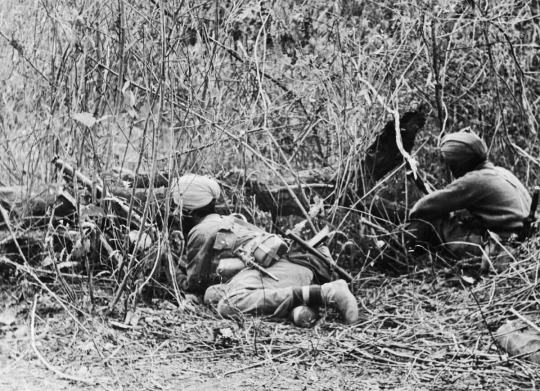
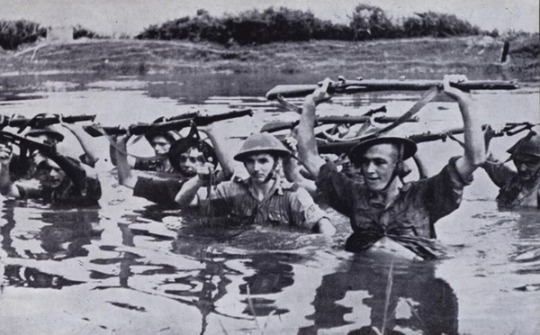
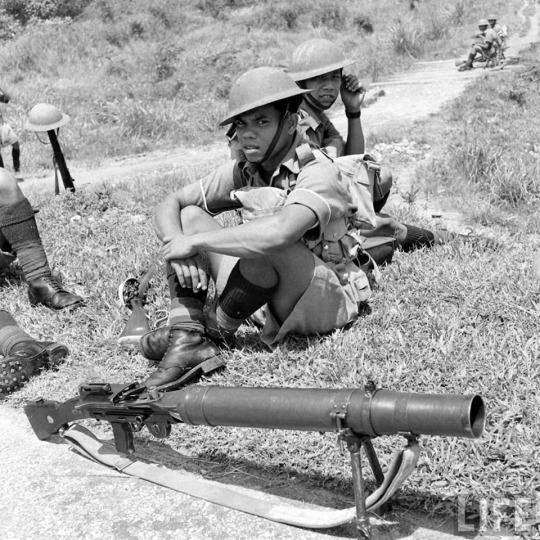

Images from top left, clockwise: Australians during the Borneo campaign; Gurkha, unknown location; British soldiers crossing a river during the Burma campaign; Australian Matilda Tanks during the Borneo Campaign; Soldier of the Malay Regiment; Indian Sikh soldiers, Burma campaign
#history#world building#valkyria chronicles#world war second#world war ii#wwii#wwii era#british empire#Australia#India#burma#Burma campaign#Borneo campaign#borneo#Gurkha#2 AIF#Matilda tanks#british army#indian army#australian imperial force#malaysia#Malay regiment#long post#long reads#shower thinking#shower thoughts#world war 2 aesthetic#history aesthetic#aesthetic
7 notes
·
View notes
Text
*Can you hear a pin drop?* *What is the meaning of pin drop silence?* *Following are some instances when silence could speak louder than voice.* *Take 1:* *Field Marshal Sam Bahadur Maneckshaw once started addressing a public meeting at Ahmedabad in English.* *The crowd started chanting,"Speak in Gujarati.* *We will hear you only if you speak in Gujarati."* *Field Marshal Sam Bahadur Maneckshaw stopped.* *Swept the audience with a hard stare and replied,* *"Friends, I have fought many a battle in my long career.* *I have learned Punjabi from men of the Sikh Regiment;* *Marathi from the Maratha Regiment;* *Tamil from the men of the Madras Sappers;* *Bengali from the men of the Bengal Sappers,* *Hindi from the Bihar Regiment;and* *Even Nepali from the Gurkha Regiment.* *Unfortunately there was no soldier from Gujarat from whom I could have learned Gujarati."...* *You could have heard a pin drop* *Take 2:* *Robert Whiting,* *an elderly US gentleman of 83, arrived in Paris by plane.* *At French Customs, he took a few minutes to locate his passport in his carry on.* *"You have been to France before, Monsieur ?", the Customs officer asked sarcastically.* *Mr. Whiting admitted that he had been to France previously.* *"Then you should know enough to have your passport ready."* *The American said,* *"The last time I was here,* *I didn't have to show it."* *"Impossible.* *Americans always have to show their passports on arrival in France !", the Customs officer sneered.* *The American senior gave the Frenchman a long, hard look.* *Then he quietly explained* *"Well, when I came ashore at Omaha Beach,* *at 4:40am, on D-Day in 1944, to help liberate your country, I couldn't find a single Frenchman to show a passport to.... "* *You could have heard a pin drop* *Take 3:* *Soon after getting freedom from British rule in 1947, the de-facto prime minister of India, Jawahar Lal Nehru called a meeting of senior Army Officers to select the first General of the Indian army.* *Nehru proposed, "I think we should appoint a British officer as a General of The Indian Army, as we don't have enough experience to lead the same."* *Having learned under the British, only to serve and rarely to lead, all the civilians and men in uniform present nodded their heads in agreement.* *However one senior officer,Nathu Singh Rathore, asked for permission to speak.* *Nehru was a bit taken aback by the independent streak of the officer, though, he asked him to speak freely.* *Rathore said, "You see, sir, we don't have enough experience to lead a nation too, so shouldn't we appoint a British person as the first Prime Minister of India?"* *You could hear a pin drop.* *After a pregnant pause,* *Nehru asked Rathore,* *"Are you ready to be the first General of The Indian Army?"..* *Rathore declined the offer saying "Sir, we have a very talented army officer, my senior, Gen. Cariappa, who is the most deserving among us."* *This is how the brilliant Gen. Cariappa became the first General and Rathore the first ever Lt. General of the Indian Army.* *(Many thanks to Lt. Gen Niranjan Malik PVSM (Retd) for this article)* 👌👌👌🙏🙏 *Worth reading ..* *This article thrills to read even after reading n times!*
5 notes
·
View notes
Text
I like how no one is focusing on the immediate replacement w/ Nepali Gurkhas. They did this 100 years ago too y’know
20 notes
·
View notes
Text
How much i want to post my char x oc pairing with Caiman (caimanether - caither), now I did. A little wall of text
I'll start with these first i think bcs I need time to comply them into one post instead of dripping some pics here and there like I did on other socials, I draw a lot about them really.
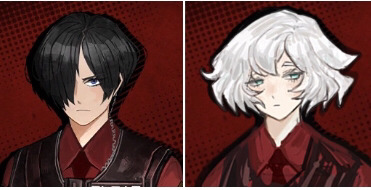
My OC name is Ether (white hair), she's Caiman subordinate and secretly (everyone knows, actually) her wifey/gfy.
Accidentally saw them next to together in my phone gallery (upper pic) and twitter media tab (below pic), you guys really love each other right...
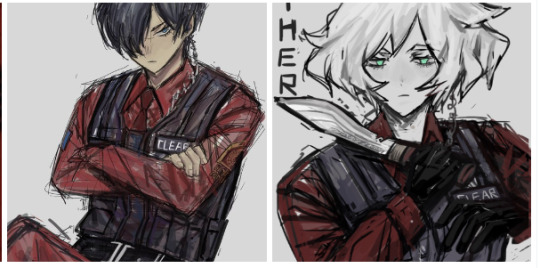
Their icon is 🐊☁️ as for Caiman is the crocodile variation (they really meant it, I check Korean dialogue logs and the letters really wrote Caiman as called the animal), and Ether means "the air" as well as she's based on one of my OC in Sky COTL, plus she looks as fluffy as the cloud itself.
I'll tag posts about them as # caimanether, caither or 🐊☁️, there are specific tags in languages that utilizes Latin alphabet or different writing systems that have their own importance lore-wise; ill write them under the tag section so you could give a look (save for the Chinese tags, all tags are set - I'll may or may not make changes to it later on). The tags are for claim, when I post it'll mostly be caither that gets to appear frequently.
About their relationship? I created this ship solely as a method of mental healing for myself so I don't care much about a specific love line, I could put them into any situation I prefer but there's one thing that's eternal is they're obsessed with each other (oh my wifeys...). And uh, high sexual tendencies, I am extra serious.

However, a story and canon universe love line will be developed when I felt like it, they - as carriers of my mental wellbeing - deserves a story as beautiful as they already are together. Ohhh and they have a child, children specifically.
One minor spilling of the beans, Ether is albino, her eyes are cyan coloured, she's Nepali coded, did distorted and had an EGO design and her lore will be based on the Gurkhas and surrounding the [REDACTED] in general, stay tuned till all the secrets, reveal. I'm still in the researching phase, plus this is fictional so I may draw or describe real life-based details wrong. Correction will gradually be made as I process, right now only appreciating love is matter.
End of post, I'm chuffed to see you took time to read this pit of words I made on a whim. See you next post.
4 notes
·
View notes
Text
Culture Of Nepal
Nepal is a land-located country between India and China. It is well known for the majestic Himalayan mountain ranges and the deep valleys that shape the landscape. Nepalese people are generally patient and calm. Here you can see many different religions and cultures people live together. Most of Nepal's culture is rooted in tradition and religion. Nepalese are proud that their country has never been ruled. The Gurkhas (Nepalese army) continue to be highly admired for their work. The people of Nepal understand the value and beauty of their land.
Customs and Traditions
Nepalese Customs and Traditions differ from one part of Nepal to another. Nepalese people have their own customs and traditions, each with its own merits. Most of them are Hindus and Buddhists. Many of these traditions come from Hinduism, Buddhism, or other traditions. Among them, marriage law is particularly interesting. Traditional marriages require the parents to agree. Cow slaughter is illegal in Nepal. The cow is considered the universal mother, representing motherhood, and worship it. Before entering a temple or a house, you are often asked to remove your shoes, so as not to pollute the clean room with your shoes. Some non-Hindu temples are prohibited. The right hand, which is considered pure, is used to eat, pay, give, and receive.
Festivals
Nepal's diverse culture is reflected in many of its events. Nepalese people celebrate so many festivals but the major festivals of Nepal are Dashain and Tihar. Dashain is one of the most anticipated festivals of the year and Nepalese Hindus celebrate it with great joy for 15 days in the month of Ashvin (September-October). Tihar is another big festival that is celebrated for five days. Apart from decorating the house with diyo, animals like cows, dogs, and crows are also worshiped at this festival.
Nepali Dance and Music
Music and Dance is also an important part of Nepali culture. Nepal is rich in traditional and classical music. According to Hindu mythology, Shiva, who is the god of dance in his Nataraja form, used to perform the Tandava dance in the Himalayas. Different cities have their own dance style that they perform in different festivals, fairs, and family time. Like dancing, Nepali music is also divided by the community: Tamangs, Gurungs, Sherpas, Maithilis, Newars, Kirats, Magars, and Tharus each have their own songs and dancing styles. Musical instruments like Madal, Dhimey, Panchai Baja, and Sarangi are the traditional musical instruments of Nepal.
Architecture of Nepal
Nepalese architecture is characterized by two main styles: the pagoda style with many revolving stalls and the domed stupa style.
The Pashupatinath Temple in Kathmandu, which attracts many tourists, is one of the oldest examples of the pagoda style in the world, built in the first century AD. A Nepalese architect named Araniko was the first to introduce pagoda-style architecture to China. Other examples of this style include Basantpur Palace and Changu Narayan Temple. Boudhanath and Swayambhunath stupas are beautiful examples of stupa architecture. The Shikhara type is another important type of architecture it consists of a high tower in the form of a mountain with carvings in stone or wood. The Krishna Temple in Patan is an example of this type of architecture. In addition to these, the Newa style, derived from the Newar is also can be seen.
Food of Nepal
Nepalese cuisine is heavily influenced by Indian, Tibetan, and Chinese cuisine. Dal, Bhat, and Tarkari is the staple food of all Nepalese regardless of ethnicity. Bhat means rice, dal means lentils, and tarkari means vegetable curry. Apart from this, there are different types of food that are eaten by different tribes and regions. For example, people living in the highlands can replace rice with other grains such as wheat, corn, millet, corn, or barley.
Traditional Clothes
The traditional clothes of Nepal are Daura-Surul and Dhaka Topi for men and Gunyo-Cholo for women. Traditional clothes are different from the caste and culture. People of different cultures wore their own cultural dress at festivals and marriage functions.
Religion
In Nepal, most of the people are Hindus. The census shows that 81.3% of the people follow the Hindu religion, 9% people follow Buddhists, 4.4% Muslims, 3% Kiratis ( the religion of some natives of the Himalayas) tribal), 1.4% Christians, and the remaining 0.9% are Jains, Sikhs, and some people who do not follow any religion. There are places of worship for all religions in the country and all religions celebrate their own festivals. There is great harmony and cooperation between the Hindu and Buddhist communities in Nepal as they share places of worship and celebrate together. Lumbini in Nepal is actually the birthplace of Lord Buddha, so it is a holy place for Hindus and Buddhists.
Language
Nepali is the national language of Nepal, it is actually a multilingual country, with each ethnic group communicating in their own language. As many as 123 languages are spoken in Nepal, the most spoken of which are Nepali, Newari, Maithili, Bhojpuri, Tharu, and Tamang. The Nepali language is written in the Devanagari language and actually evolved from the ancient Sanskrit language.
Handicrafts Arts
Variety of products including metalware, pottery, textiles, wood and stone handicrafts, paper, bone, horn, leather, bamboo, etc. The list seems endless, which means you will never run out of products to buy in Nepal. Although some of these objects, such as metal images of gods and goddesses, religious objects such as bells and vajras, wooden carvings, and silver ornaments, have been made since the beginning of civilization. Among textiles, it is useful to know Pashmina and clothes of yak wool. Nepalese artisans have received respect and admiration for their work from people around the world.
#Nepal culture and traditions#Nepal religion and culture#Unique culture of Nepal#Hindu culture in Nepal
5 notes
·
View notes
Text
Close to three hours and I’m still chewing this strange, rock-hard concotion. “Tastes like wood,” I said, to Chef Bhumika’s amusement. Then it slowly became only slightly more splintered, with only a slightly meatier taste to it, which confused me, as I’d think it came from a tree. “It’s made from a cow,” Bhumika explained. As if to add further insult to vegans if they were to know of such a thing, she pointed to the grated cheese. Being annoyingly deaf, I finally caught up with the word - “yak”. I pulled up Google. “Yes, that’s the one!” She burst out laughing.

The gurkhas, the sherpas, or the mountain villagers that these chefs still are at heart… Nepali people are literally a tough lot. It’s admirable.
2 notes
·
View notes
Link
#Asia#Bhaktapur#ChitwanNationalPark#Culture#Geography#History#India#Kathmandu#landmarks#Lumbini#Nepal#PlacestoVisit#Pokhara
0 notes
Text

Florian and Juliana go to Pasio soon
Naranja Academy and Uva Academy with Gurkha Symbols
youtube
youtube
#pokemon#pokemon masters#pokemon masters ex#pokemas#pokemon scarlet and violet#pokemon sv#trainer florian#pokemon florian#trainer juliana#pokemon juliana#koraidon#miraidon#nepal#nepali#nepalese#gurkha#gurkhas#nintendo#dena#Youtube
2 notes
·
View notes
Text
Beyond the Peaks: Cultural Encounters on the Annapurna Circuit

Embarking on the annapurna trip is more than just a journey through towering peaks and breathtaking landscapes. This iconic trek in Nepal offers a rich tapestry of cultural experiences that leave lasting impressions on travelers. As you navigate through diverse terrains, you'll encounter vibrant communities, ancient traditions, and heartwarming hospitality. Here’s a deep dive into the cultural encounters that make the Annapurna Circuit a truly transformative adventure.
Introduction to the Annapurna Circuit
The Allure of the Annapurna Circuit
The Annapurna Circuit is one of the most celebrated trekking routes globally, drawing adventurers from all corners of the earth. Its appeal lies not just in the majestic mountain views but also in the opportunity to immerse oneself in the local culture.
Preparing for the Annapurna Trip
Before setting out, it's essential to prepare adequately. This includes understanding the physical demands, gathering the right gear, and familiarizing yourself with the cultural etiquette of the regions you'll be visiting.
Cultural Highlights Along the Annapurna Circuit
The Diverse Ethnic Groups
The Gurungs
The Gurung community, known for their bravery as Gurkha soldiers, populate many villages along the trek. Their warm hospitality and unique traditions provide a glimpse into their rich cultural heritage.
The Thakalis
In the Kali Gandaki Valley, you'll encounter the Thakali people, renowned for their entrepreneurial spirit and delicious cuisine. Their influence is evident in the well-maintained tea houses and lodges.
The Manangis
High up in the Manang district, the Manangis showcase a blend of Tibetan culture and local customs. Their monasteries, festivals, and traditional lifestyles offer a unique cultural experience.
Festivals and Celebrations
Tihar – The Festival of Lights
Tihar, also known as Deepawali, is a five-day festival celebrated with great enthusiasm. If your trek coincides with Tihar, you'll witness beautifully lit villages, traditional songs, and the worship of animals like cows and dogs.
Losar – Tibetan New Year
Losar, celebrated by the Tibetan communities, marks the Tibetan New Year. The festival is characterized by vibrant dances, prayers, and feasts, providing trekkers with an unforgettable cultural spectacle.
The Monasteries and Temples
Braga Monastery
One of the oldest monasteries in the Manang district, Braga Monastery, offers stunning views and a serene environment. It’s a perfect spot for trekkers to pause, reflect, and soak in the spiritual ambiance.
Muktinath Temple
Muktinath, a sacred site for both Hindus and Buddhists, is a highlight of the trek. The temple complex is known for its 108 water spouts and the eternal flame, making it a significant pilgrimage site.
Traditional Architecture
Stone and Mud Houses
The traditional houses along the Annapurna Circuit are built using local materials like stone and mud. Their unique architecture is designed to withstand the harsh weather conditions of the Himalayas.
Chortens and Mani Walls
Scattered along the trek are chortens (Buddhist shrines) and mani walls inscribed with prayers. These structures are a testament to the region’s deep-rooted spirituality and cultural heritage.
Local Cuisine
Dal Bhat Power 24 Hour
Dal Bhat, a traditional Nepali meal consisting of lentil soup, rice, and vegetables, is a staple for trekkers. It’s nutritious and provides the energy needed for the strenuous trek.
Thakali Thali
The Thakali Thali is a culinary delight that offers a variety of flavors and textures. It typically includes rice, lentils, vegetables, pickles, and meat, providing a hearty meal for hungry trekkers.
Homestays and Tea Houses
Experiencing Local Hospitality
Staying in homestays and tea houses is a highlight of the Annapurna trip. These accommodations, run by local families, offer a warm and welcoming environment, allowing trekkers to experience Nepali hospitality firsthand.
Supporting Local Communities
By choosing local accommodations, trekkers contribute to the local economy and help sustain these remote communities. It's a meaningful way to give back and ensure the preservation of the culture and traditions.
Language and Communication
Learning Basic Nepali Phrases
While English is widely understood along the trek, learning a few basic Nepali phrases can enhance your interactions with the locals. Simple greetings and expressions of gratitude go a long way in building rapport.
The Role of Guides and Porters
Hiring local guides and porters not only provides employment opportunities but also enriches your trek with their knowledge and insights. They act as cultural ambassadors, bridging the gap between trekkers and the local communities.
Respecting Local Customs and Traditions
Dress Modestly
While trekking, it's important to dress modestly, especially in villages and religious sites. Respecting local customs shows cultural sensitivity and fosters positive interactions.
Be Mindful of Photography
Always ask for permission before taking photos of people, especially in remote villages. Being respectful of their privacy and traditions is crucial for responsible tourism.
The Impact of Tourism
Positive Contributions
Tourism brings economic benefits to the region, improving infrastructure and providing livelihoods for local communities. It also promotes cultural exchange and mutual understanding and annapurna tour
Challenges and Solutions
However, tourism also brings challenges such as environmental degradation and cultural erosion. Sustainable tourism practices and responsible trekking can help mitigate these issues.
Conclusion
The Annapurna Circuit offers more than just a trek through stunning landscapes; it’s a journey through rich cultural heritage and diverse traditions. By immersing yourself in the local culture, you’ll gain a deeper appreciation for the region and its people. As you traverse the trail, remember to respect and support the local communities, ensuring that the beauty of the Annapurna trip remains for generations to come.
0 notes
Text
NEPAL
𝟮𝟭 𝗳𝗮𝗰𝘁𝘀 𝘆𝗼𝘂 𝗱𝗶𝗱𝗻'𝘁 𝗸𝗻𝗼𝘄 𝗮𝗯𝗼𝘂𝘁 𝗡𝗲𝗽𝗮𝗹:
1. Nepal is home to eight of the world’s ten tallest mountains, including Mount Everest, the highest point on Earth, locally known as Sagarmatha.
2. The flag of Nepal is the only national flag that is not quadrilateral in shape. It consists of two stacked triangles.
3. Despite its small geographic size, Nepal has a highly diverse population, with over 120 different ethnic groups and more than 123 languages spoken.
4. Nepal was never colonized, making it one of the few countries in Asia that has retained its sovereignty throughout history.
5. Kathmandu, the capital city, is known for its historic temples and vibrant street life. The Kathmandu Valley itself is a UNESCO World Heritage Site, containing important sites such as the Patan and Bhaktapur Durbar Squares.
6. The Nepalese New Year is celebrated in mid-April and is known as "Bisket Jatra" among other names depending on the specific region.
7. Nepal operates under a federal parliamentary republic. It adopted its new constitution in 2015, which included the change from a Hindu monarchy to a secular state.
8. The cow is considered sacred in Hinduism and is the national animal of Nepal. As a result, slaughtering cows is illegal.
9. Nepal has a significant number of rhododendron species (national flower) that bloom across the hills and mountains of the country, particularly in the spring.
10. The "Gurkhas," known for their bravery and strength, are Nepalese soldiers who have been recruited into the British Army since 1815, as well as the Indian Army, serving with distinction in various conflicts globally.
11. The cuisine of Nepal is varied due to its ethnic diversity and topography, featuring dishes like momo (dumplings), dal bhat (lentils, rice, and vegetables), and gundruk (fermented leafy green vegetable).
12. Lumbini, located in the Rupandehi District, is believed to be the birthplace of Lord Buddha and is a sacred pilgrimage site.
13. Despite its mountainous terrain, only about 20% of the total land is arable in Nepal, making agriculture challenging but a dominant part of the economy and lifestyle.
14. Nepal has a practice of worshipping a living goddess known as "Kumari," considered a physical embodiment of divine female energy.
15. Mountaineering and trekking are significant contributors to Nepal’s economy, attracting adventure tourists from all over the world eager to explore the Himalayas.
16. Nepali music is heavily influenced by the folk traditions of the Himalayan region, featuring instruments like the madal and sarangi.
17. The Indra Jatra festival is one of the exciting and important festivals in Kathmandu during which the living goddess Kumari is paraded through the city in a chariot.
18. Dhaka fabric, known for its distinctive patterns and colors, is a handwoven fabric made in Nepal and used primarily for traditional caps and shawls.
19. The Yeti, often referred to as the "Abominable Snowman," is a mythical creature said to reside in the Himalayas, and stories of its sightings have been a part of Nepali folklore for generations.
20. Nepal uses a unique calendar system known as the Bikram Sambat, which is approximately 56 years and 8 months ahead of the Gregorian calendar.
21. Nepal has a relatively young population, with roughly half being under the age of 20, reflecting different challenges and potential for the country's future.
0 notes
Text
Gurung Culture: Unveiling the Heritage, Festivals, & Food
The Gurungs are a fascinating caste in Nepal with a rich culture, history, and traditions. They are renowned for their hardworking nature and bravery, and their honesty and loyalty are highly respected. Many Gurungs have served in the British military as Gurkha soldiers, and they have also played a significant role in the Nepali army throughout history. Culture and Traditions Gurung culture is…
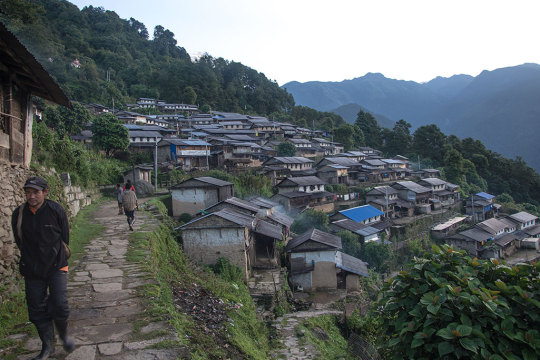
View On WordPress
0 notes